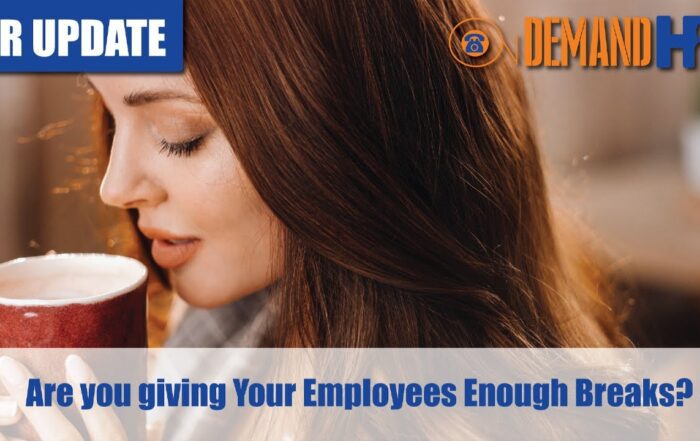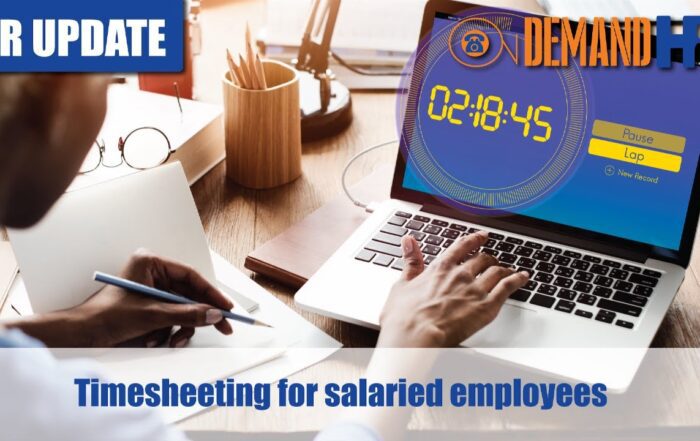Decision On Casual Employees 2021
In this short video, we’re going to unpack these rulings as well as the result of the recent appeal, changes implemented into the Fair Work Act to limit the initial scope of the precedent, as well as the implications and recommendations for businesses to upate their workplace relations affairs in response to all of this and to maintain compliance.
Please see below for a full transcript of the webinar
Share the HR or workplace relations challenge facing your business and one of our experienced consultants will be in touch within 24 hours with a strategic action plan or discover the best strategy yourself by accessing out free online training library.
Transcript
Hi There, Andrew Koleda from On Demand HR here with an important update regarding casual employment for business owners. The topic of casual employment has been brought to the forefront in recent years through decisions in the cases of WorkPac vs Skene & WorkPac vs Rossato. In this short video, we are going to unpack the rulings as well as the result of the recent appeal, changes implemented in the Fair Work Act to limit the initial scope of the precedent as well as the implications and recommendations for businesses to undertake to their Workplace Relations affairs in response to all of this and maintain compliance.
Both these significant cases against the same labour hire company WorkPac ended up with rulings that determined that the both employees who were engaged as casual employees were in practice full time employees due to the regular and systematic nature of the work they carried out. This lead to a ruling that the employees were entitled to backpay of entitlements such as leave, however the most significant outcome was that in determining the amount owing to the employees, the Federal Court did not consider the casual loading that was already paid to the employees as offsetting the leave entitlements owing.
This means that hypothetically if the employee was being paid $100 per hour plus a $25 per hour casual loading, the High Court considered their base rate of pay was $125 per hour and the respondent was ordered to backpay entitlements based on this higher rate and the additional $25 was not considered to offset the amount owing. No doubt you can see why this caused significant fear in the business community with concerns about massive payouts of entitlements across the entire spectrum of the economy.
The Federal Government in response as part of the Fair Work Amendment (Supporting Australia’s Jobs and Economic Recovery) Bill 2021 in response to the Covid 19 pandemic sought to firm up the definition of a casual employee to close this potential loophole and provide certainty to business. Most notably under section 15A of the act, they define casual employment as “ where an offer of employment is made by the employer on the basis that the employer makes no firm advance commitment to continuing and indefinite work according to an agreed pattern of work for the person, and the offer is accepted on that basis, resulting in the person becoming an employee.”
In effect, what this means is that the test of casual employment is made at the time of offering employment and cannot not change during the course of the employment based on working patterns or other factors unless mutually agreed between the employer and the employee. Even further, provisions were introduced with the effect of allowing employers to offset any casual loading already paid against entitlements in the event future orders are given against an employer.
The legislative changes have recently lead to the case of Workpac vs Rossato to be overturned and under the new regulations Roassato was considered a casual employee by the new definition.
With all of this now in the history books, it seems like a win for employers engaging casual staff as well as a win for employees protecting the higher take home wages from 25% casual loading rates. So what should businesses do to protect themselves?
We have a couple of recommendations for our clients including:
- Using the opportunity to review their employment contracts with an emphasis on clearly identifying the nature of employment as a casual employee as well as identifying the inclusion of a casual loading
- Inclusion of preventative clauses to offset casual loading paid against any other employee entitlements which may be owing in the future
- Review compliance with the National Employment Standards where an additional provision has been included providing for an obligation to offer casual conversion after 12 months. Often it is good practice to include this in the initial offer of employment to prevent compliance concerns in the future. We note that once employees discover that they will actually be earning less take home pay by converting to part time or full time employment they choose to remain as casual employees despite what you might hear in the media.
If you would like some assistance in determining if your business has any compliance risk regarding casual employees or any other area of your Workplace Relations affairs, please reach out to us by visiting ondemandhr.com.au and we will be only too happy to help.
Once again, Andrew Koleda from On Demand HR and looking forward to seeing you all in the next update.






